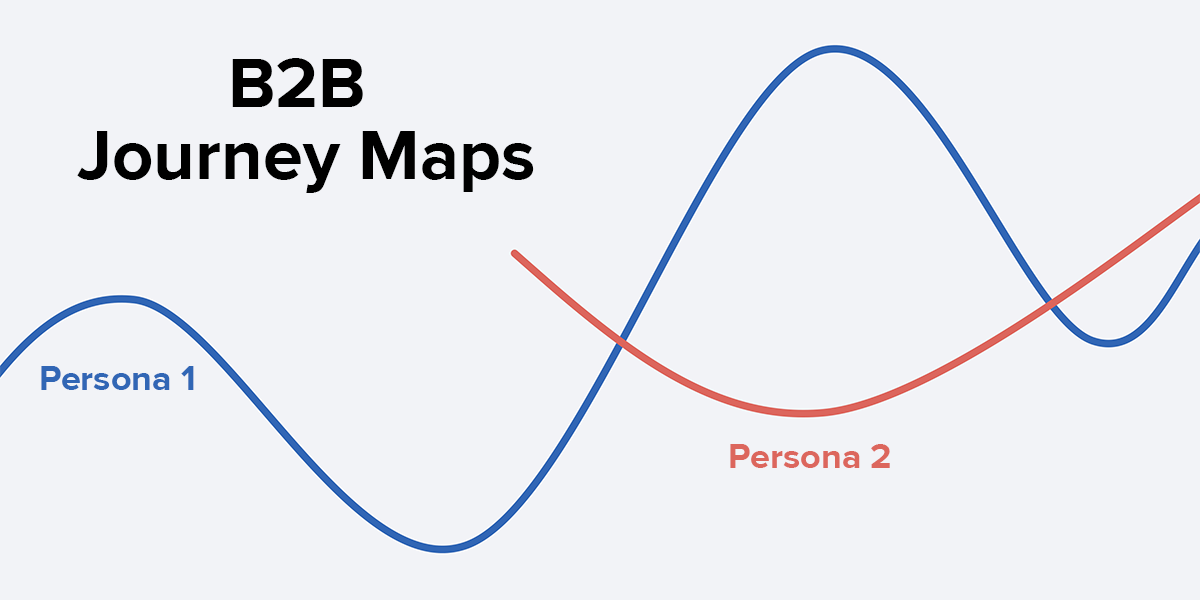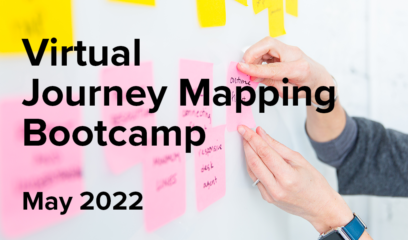In our journey mapping bootcamps, we’re often asked whether there’s anything that organizations need to think about or do differently when creating business-to-business (B2B) journey maps. While the overall process for creating these maps is the same, there are two key differences.
Difference #1: B2B personas align with job functions.
Every journey map needs to clearly define whose story is being told. Just as with business-to-consumer (B2C) maps, that “who” is a person. With B2B maps, that someone works within an organization that’s doing business with you — and so they tend to be defined in terms of their job function or role: head of marketing, procurement specialist, system administrator, etc.
However, you may find that you need to have multiple personas (and therefore multiple maps) for each job function. These personas should account for differences in:
- Knowledge, preferences, and attitudes. For example, a seasoned professional who knows their own company’s processes inside and out and prefers phone conversations might have a very different experience than a new employee who needs to look up information/processes and prefers digital channels.
- Size or type of organization that they work for. The head of marketing for a small software company likely has different needs and constraints than those of a CMO at a Fortune 100 company.
- Tenure as your client. A customer that’s worked with your company before will likely understand a bit about how you operate, have contacts within your organization to reach out to if things go awry, or possess other knowledge that new customers lack.
Keep in mind that whoever’s looking at your maps needs to be able to empathize with your personas, so push yourself to describe them in terms that go beyond the mechanics of their jobs. Defining customer characteristics such as comfort with technology, attitudes towards their work, and underlying motivations will help bring your B2B personas to life and generate more empathy.
Difference #2: B2B maps depict internal interactions.
B2B journey maps frequently depict not only the interactions the persona is having with your organization, but also the internal interactions within their own organization. This might include activities like getting advice from colleagues (or other information sources), working with their own procurement department, or getting buy-in from an executive sponsor. This leads to two different possibilities for your maps:
- If an actor within your client’s organization makes just a brief and uncomplicated appearance — like the CFO approving a contract — that actor (and the corresponding interaction) can be represented in a single step in your persona’s journey. “Alice gets contract approval from the CFO.”
- If an actor has a more involved role — say the CFO typically gets in touch with your organization for more information before approving the contract — you may also want to include an additional “journey line” to show the actions/experiences of that role. In this case, your map may look something like the image above, with differently colored lines representing the experiences of different personas. This type of representation obviously makes your maps more complex, but it has the benefit of showing how multiple customer roles interact with each other internally and with your organization to accomplish a goal.
***
Have you found other key differences between B2C and B2B journey maps? If so, please share them below.




